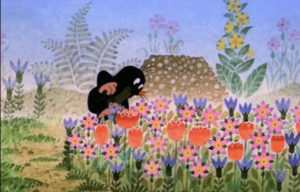The greatest trick technocracy ever pulled was convincing the world that it is associated with competence. Technocracy presents itself as government by people who know what they are doing – the ‘adults in the room’, the ‘wise minority in the saddle’ guiding the herd, and so on. In truth, the exact opposite is true: technocracy is always and everywhere doomed to disaster, and our current technocracy is no different. It is a technocracy of failure.
“Banks have been put on the front line of defense against financial crime. That makes sense because they have the personal data and handle the money, but it takes a lot of work to check out clients’ sources of income and business relationships. To speed up the process and limit costs, banks have turned to third-party data firms and automated systems. The bureaucracy has been industrialized. It could be throwing up too many false positives, but it almost certainly is making it hard for individuals who get wrongly classified as risky to overturn those results. Once you’re in a database that is replicated and resold many times over, it can be an endless task to get yourself scrubbed from it. Politicians have made the most noise and got the regulator’s attention, but it seems likely to be others suffering bureaucratic nightmares. The FCA’s own data shows one in 10 British Muslims don’t have access to banking, compared with 2% of all UK adults. Regulators should look not only at banks’ policies for applying the rules, but also examine their systems for performing the job.”
– Paul J Davies, columnist at Bloomberg ($). He makes excellent points about how banks, using tech services to keep on top of potential money launderers, have allowed their systems to run amok. The analogy here is the “no fly lists” that countries have for people suspected of terrorism, etc. If you get on these lists, and haven’t done anything wrong (such as if your name comes up)
Flowers Are Evolving to Have Less Sex NYT
The Accidental Origin of Capybara Open Air Hot Baths Laughing Squid
Should Endangered Turtles Have Legal Rights?Smithsonian
 I was walking with my teenage son in a large shop the other day, and we passed by the children’s section. I saw a duvet cover that so much reminded me of Kretk – or, in English translation, the Little Mole. We were recalling which of the Kretk films that we saw we liked most – but basically, we liked almost all of them. Thinking of the Little Mole brought back happy memories.
I was walking with my teenage son in a large shop the other day, and we passed by the children’s section. I saw a duvet cover that so much reminded me of Kretk – or, in English translation, the Little Mole. We were recalling which of the Kretk films that we saw we liked most – but basically, we liked almost all of them. Thinking of the Little Mole brought back happy memories.
Krtek is a series of animations that have been made by Zdenek Miler in the 1950s and 1960 in Czechoslovakia. It has a very interesting artistic signature: not only the pleasing and colourful visual arts, and the typical light, cheerful and romantic music that would come with it; lots of anti-modernist themes (such as in this one that I just found on YouTube where the little mole tries to stop the damage a bulldozer will do to its flowers); and, of course, animals that are all humanized, as they are in many movies for children. Not all animals are nice, by the way; one of my favourite Krtek movies is one where there are large animals (wolves?) who are a danger to the other animals, and by painting themselves and standing on each other’s shoulders (and thus pretending to be huge, much more dangerous monsters themselves), they are able to chase away the wolves. (NB – I have this from my memory from watching this a pretty long time ago, so not 100% reliable!).
With for many of our readers the holiday season before the door, I just wanted to share this with those of you who have never heard of the Little Mole. If you have small children, I bet they (and perhaps you too) might like to see some of it, tucked away under a blanket on the couch. Happy holidays!
